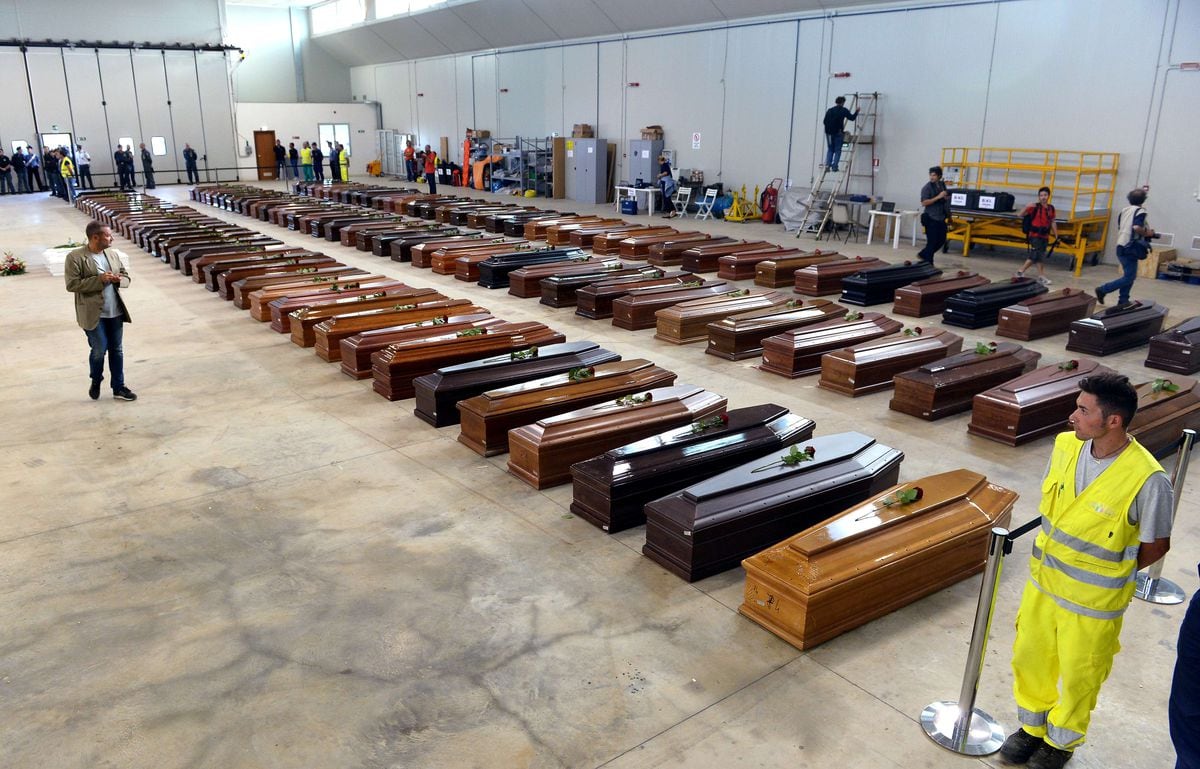On October 3, 2013, an old fishing boat with some 500 migrants on board coming from the Libyan coast sighted land half a mile away.
It was the Sicilian island of Lampedusa, the closest gateway to Europe for the Somalis and Eritreans on board.
In fact, two boats just before this one had come into port.
It was five in the morning, so they set a sheet on fire to get the attention of the rescuers.
But the fire ended up igniting the entire ship and the passengers were thrown into the water as the barge sank.
368 people died, the biggest migration-related catastrophe on the Italian coast.
A tragedy that marked Italian political life, its relationship with Europe and the electoral cycles that would take place in the following decade.
Until last Sunday.
The tragedy on the Calabrian beach of Steccato di Cutro, although it happened now, ten years later, is similar in many ways.
It reflects other types of problems and speaks to a country other than that of Italy, then governed by the left - Enrico Letta was the prime minister - and today by the ultra-right.
Almost everything has changed since then.
Minus the death figures and the enormous community failure to reach an agreement between the European Union and the member countries that resolves a chronic crisis.
Since that 2013, the southern European sea continues to be a cemetery where some 26,000 migrants (according to the International Organization for Migration) have died in a painful transit.
Remains washed up by the sea on a beach near Cutro, in southern Italy, this Monday. Giovanni Isolino / LaPresse (AP)
Lampedusa was the beginning.
And also a kind of political syndrome that gave rise to almost all the political phenomena that would come later.
The migratory question, the social alarm and the electoral instrumentalization that was made of that moment of maximum pressure opened the door to one of the most violent populist gales in Europe.
Italy received some 600,000 migrants in the following five years.
The lack of clear answers in the European Union and chaotic reception management —in many cases in the hands of organized crime— turned the issue into the central axis of the elections on March 4, 2017, which the 5 Star Movement won ( M5S).
Whoever wanted to govern had to have a tough speech against immigration.
This was also done by the Democratic Party, which entrusted the matter to the Minister of the Interior, Marco Minniti,
The arid 20 square kilometers of Lampedusa, an island of 5,800 inhabitants that became a symbol of universal welcome after the visit of Pope Francis after the shipwreck, soon became the perfect portrait of an inflamed society.
Especially because of the anti-immigrant rhetoric of parties like Matteo Salvini's League, which was growing exponentially in the polls at the time on account of his xenophobic discourse.
The island also changed its mayor.
And narrative.
Thus, something similar began to happen in many locations throughout Italy.
Even in those that had distinguished themselves as flags of the left, old strongholds of the communist party.
In 2016, arrivals by sea reached a peak of 186,000 people, according to the Italian Ministry of the Interior.
Immigration was the topic.
And who wouldn't want to see it?
Italy has since had seven governments and six prime ministers.
The battle against illegal immigration was the flag of the Executive formed in 2017 by the League and the M5S, which turned the NGOs ―which multiplied after the Lampedusa event and the growing migratory flows― into the main enemy of the Government.
There was everything.
Salvini himself, then Minister of the Interior, blocked the ships of these organizations, starred in a media fight against the captain of one of those boats -Carola Rackete-, was tried for kidnapping people... In Brussels, there have been no news either.
And arrivals by sea are still very high: 104,061 in 2022.
Matteo Salvini, leader of La Liga, visits the refugee reception center on the Sicilian island of Lampedusa (Italy), in August 2022. David Lohmueller (AP)
The EU, despite multiple attempts, has not managed to find a formula to stop irregular immigration.
Or to balance your weight and its effects among your partners.
The migration pact that the European Commission launched in 2020 is practically at a standstill due to the profound differences between members.
Of the 8,000 offers for the relocation of migrants by the 21 EU States that signed it, only 3% of the transfers have materialized to date.
The shipwreck in Calabria now closes a cycle.
And surely Italy will use it again to press for a solution that allows the redistribution of migrants who enter through its borders.
In fact, it is the first time that the majority of authorities, including the President of the Republic, Sergio Mattarella,
has targeted Brussels directly.
Beyond electoral issues, nothing indicates that there will be changes in the short term.
As already happened in the Lampedusa shipwreck in 2013.
Follow all the international information on
and
, or in
our weekly newsletter
.
Subscribe to continue reading
Read without limits
Keep reading
I'm already a subscriber

